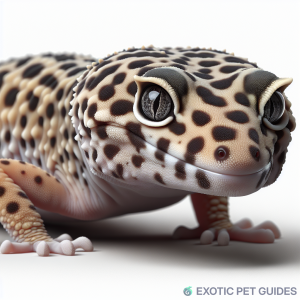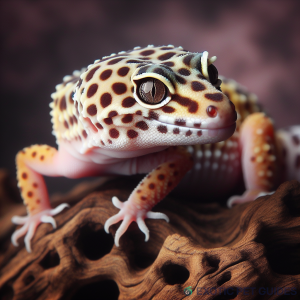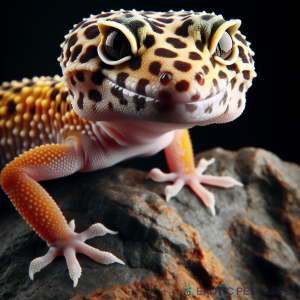When it comes to beginner-friendly reptiles, the Leopard Gecko (Eublepharis macularius) is often at the top of the list—and for good reason. With their charming appearance, manageable size, and relatively low maintenance needs, leopard geckos make ideal pets for both newcomers and experienced herpetologists alike.

🐾 Origins and Natural Habitat
Leopard geckos are native to the arid and semi-arid regions of Afghanistan, Pakistan, India, Iran, and Nepal. Unlike many other geckos, they are terrestrial, meaning they prefer to live on the ground rather than climbing trees or walls. Their natural habitat consists of rocky deserts and grasslands where they hide under rocks or burrow to escape the heat.
🌟 Why Are They Called “Leopard” Geckos?
Their name comes from their distinctive spotted pattern, which resembles the coat of a leopard. Hatchlings are usually striped, but as they mature, the stripes break up into a spotted design. Selective breeding has also produced a wide array of color morphs—from albino and blizzard to tangerine and super snow—making them a favorite among reptile hobbyists.

👁️ Unique Features
Leopard geckos differ from many other geckos in several fascinating ways:
- Movable Eyelids: Most geckos lack eyelids, but leopard geckos have them, allowing them to blink and close their eyes.
- Lack of Sticky Toe Pads: Unlike tree-dwelling geckos, they can’t climb smooth surfaces.
- Tail Functions: Their fat tail stores nutrients and can also detach as a defense mechanism if threatened.
🏠 Setting Up Their Habitat
Creating the right environment is key to a healthy gecko:
- Tank Size: A 10-20 gallon tank is sufficient for one adult gecko.
- Substrate: Use safe options like reptile carpet, paper towels, or tile. Avoid sand to prevent impaction.
- Temperature: Provide a warm side (88–92°F) and a cool side (70–75°F) with an under-tank heater or heat mat.
- Hides: Offer at least three hides—warm, cool, and moist (for shedding).
🍽️ Diet and Feeding
Leopard geckos are insectivores, meaning they eat insects exclusively. A well-balanced diet includes:
- Crickets, mealworms, and dubia roaches
- Occasional treats: waxworms or hornworms
- Calcium and vitamin D3 supplements are essential for bone health

🧼 Care and Handling
These geckos are relatively low-maintenance:
- Spot-clean their tank daily and do a full clean weekly.
- Handle gently and infrequently at first to allow trust to build.
- They are generally docile, making them great for kids (with supervision).
⏳ Lifespan and Commitment
With proper care, leopard geckos can live 15–20 years in captivity. That means taking on one is a long-term commitment, but also a long-lasting bond.
📝 Final Thoughts
Whether you’re a first-time reptile owner or a seasoned collector, the Leopard Gecko offers a delightful blend of personality, beauty, and simplicity. With their expressive eyes, quirky behaviors, and wide array of color morphs, they’re more than just pets—they’re companions.
Thinking about getting a leopard gecko? Or already have one and want care tips?